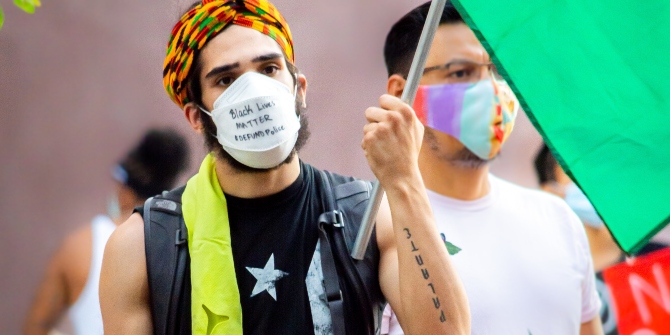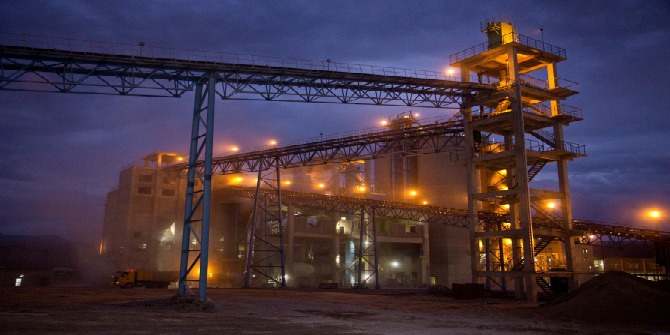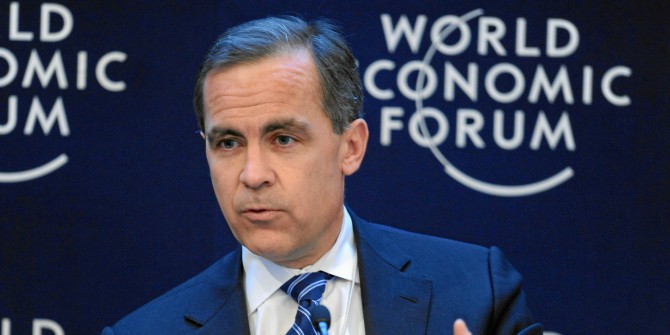Remittances, money migrants send to family members back home, tend to fall in times of crisis in migrant-receiving economies, but that has not been the case during the COVID pandemic. Catherine E. De Vries, David Doyle, Hector Solaz, and Katerina Tertytchnaya organised three focus groups in Kyrgyzstan, the third most remittance-dependent economy in the world, just behind Tonga and Lebanon. They found that the impact of the pandemic varied across migrant employment sectors, hospitality being the worst affected. Some family members report sending money from Kyrgyzstan to their migrant members in Russia.
In April 2020, the World Bank predicted that, as a result of the pandemic, global remittances, money migrants send to family members back home, would decline by approximately 20 per cent. This was one of the steepest predicted declines in history. For comparison, during the Great Recession of 2008-2009, global remittances dropped by approximately 6 per cent. A year into the pandemic, however, remittances have proved resilient.
According to the World Bank’s most recent report, published on May 12, 2021, compared to 2019, remittances flows to lower middle-income (LMIC) countries in 2020 dropped by 1.6 per cent. Indeed, because of the drop in foreign direct investment, remittance flows to LMIC, excluding China, even surpassed the combined total of foreign direct investment and official development assistance. Fiscal stimulus packages in migrant-receiving economies, growing demand for migrant labour in construction and agriculture, and migrants’ own desire to help family back home helped remittance flows defy predictions. Yet, the world average just quoted masks important regional differences. While remittances inflows to Latin America and the Caribbean increased by 6.5 per cent, for example, remittances inflows to Europe and Central Asia and Sub-Saharan Africa dropped by approximately 9.7 and 12.5 per cent, respectively.
To hear how fluctuations in remittances influenced the livelihoods of recipients in some of the world’s worst affected regions, we organised three focus groups in Kyrgyzstan. In 2020, remittances made up 29% of the country’s GDP, making Kyrgyzstan the third most remittance-dependent economy in the world, just behind Tonga and Lebanon. As a result of the pandemic and weak oil prices, remittances from Russia, the key destination for Kyrgyz migrants, declined by 17 per cent in 2020. The focus groups we organised took place between 30 April and 1 May 2021 in Bishkek, the Kyrgyz capital, and also in Osh, and Osh oblast. Insights from these groups help paint a nuanced picture regarding the impact of the pandemic on remittances and their recipients, with distinct policy implications. We present them below.
COVID-19 and remittances: sectoral differences
The focus group discussions underscore how the impact of the pandemic varied across migrant employment sectors. The families of migrants employed in essential services, such as shops, factories, or the agricultural sector, report receiving a stable amount of remittances throughout the last year. However, the families of migrants employed in the hospitality, or catering sector report either not receiving any remittances for weeks on end or experiencing large fluctuations in the amount of remittances received.
Focus groups participants paint a grim picture of the conditions facing migrants employed in these sectors, with several left without wages and unable to pay for rent. Indeed, some family members report sending money from Kyrgyzstan to their migrant members in Russia. Reverse remittances were made possible either through loans families took to support their migrant relatives, or by tapping into household savings, accumulated, in part, by setting aside remitted income received before the pandemic. Tapping into savings accumulated through remittances helped many households smooth consumption during the early months of the pandemic as well.
Our qualitative data from Kyrgyzstan, echoes earlier research on how the effect of the pandemic on remittances may vary depending on migrants’ employment sector. A report issued by the US Federal Reserve, for example, asks whether during the pandemic, the surge of remittances to Mexico – in contrast to the decline of remittances to El Salvador – may be partly explained by the boom in construction-related activities in the summer of 2019. As shown elsewhere, sectors like construction, home-improvements and landscaping in the US are disproportionally served by Mexican immigrants. Putting these expectations to the test, however, is often difficult, as we lack detailed, high-quality, data on the share of remittances generated by each employment sector in remittance-receiving economies.
Over-time fluctuations in remittances
Focus group discussions also highlight important over-time differences on the effect of the pandemic on remittances. Our qualitative data match evidence from aggregate data, and imply that the overall share of remittances fell sharply the second quarter of 2020, yet gradually began to recover in the third quarter of the year. The initial decline in remittances seems to be driven by several factors, beyond restrictions in migrants’ host economies. Chief amongst them is the increase in the cost of air-tickets and PCR tests, which made the trip abroad more costly than usual. So, while the majority of Kyrgyz migrants did not attempt the trip back to the country – it was mainly women who returned, largely pushed by of the lack of childcare back home – new and seasonal migrants did not try to leave the country either, at least in the first half of the year. The increase in remittances later in the year is driven by the increase in the demand for migrant labour, and the increase in wages in Russia, especially for those employed in construction and agriculture. These and similar factors may explain the bounce-back in remittances in other parts of the world as well. Just like in Kyrgyzstan, remittances to Guatemala, Sri-Lanka, and Albania also declined in the second quarter of 2020, but recovered later in the year.
Long-term impact: household spending decisions
How does the experience of the pandemic affect migrant households’ long-term spending decisions? Focus group participants emphasise that the pandemic highlighted the need to accumulate precautionary savings, as income support measures are lacking. Participants noted that they will not be embarking on any house-improvement projects for a long time to come, and that, to the extent possible, they will save remitted income for the future. These decisions, however, will delay economic recovery in migrant-sending economies. Money put into savings – as opposed to being invested into home improvements and construction, or retail, may exacerbate the recession. Already in 2020, Kyrgyzstan’s real GDP contracted by 8.6 per cent.
There are lessons to be learnt here. Ensuring that migrant families are supported through social service programmes and cash transfers may not only help remittance recipients smooth consumption but could also ensure that they continue to re-invest remittances into the economy, bolstering long-term growth and accelerating recovery.
♣♣♣
Notes:
- This blog post is based on research funded by St Hugh’s College, University of Oxford. The project’s ethics approval reference is SSH/DPIR_C1A_21_009
- The post expresses the views of its author(s), and do not necessarily represent those of LSE Business Review or the London School of Economics.
- Featured image by Irene Strong on Unsplash
- When you leave a comment, you’re agreeing to our Comment Policy






Interesting report! Evidence so far from Nepal suggests many of the features identified in Kyrgyzstan.